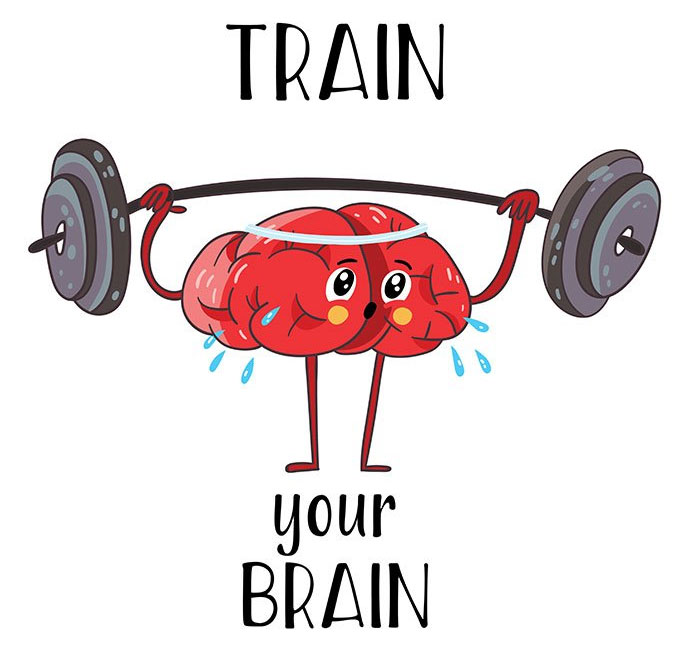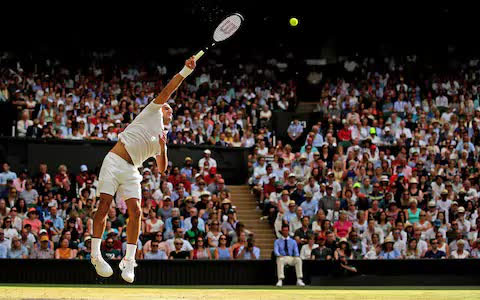The best way to be talented is to train the brain to train everyday
"There are no problems that cannot be solved but only difficult problems to confront". "If we can teach hands and feet, why can't we teach the brain?" , math genius Grigori Perelman talked about the brain training to win Clay's Millennium Prize in an interview.
What is the best way to train your brain? Below is the opinion of a scientist on quora.com, one of the most famous question and answer websites today.
According to neuroscience researcher Tiberiu Tesileanu of the Flatiron Institute of Computational Biology (New York), we train our brains the same way we train our bodies: exercise!

If there are no topics that you are interested in, read a wide variety of topics.(Illustration).
Accordingly, you need to learn the topics you are interested in both ways: reading or asking people and practicing using topics by solving exercises (with math, physics), writing (if you count study literature), compose music (with music) .
Remember also, sometimes you need to work hard to learn something that you are not interested in , to help you solve the problem that really appeals to you. If there are no topics that you are interested in, read a wide variety of topics. Over time, you'll find something to focus on.
It is very common for people to search for shortcuts or shortcuts . People often ask about a miraculous app that can teach you to learn math faster, a miraculous book that can teach anyone who is proficient in photography for two weeks, a miraculous website that teaches you basic design for 10 minutes . Problem The problem is: all those things are silly.
The most important thing in improving your brain is not what books you learn but the amount of practice you do, and that takes time. This is similar to sports: You can read everything you want about tennis, but before you take a racquet in your hand and hit the ball thousands of times, you won't be used to being good at it. So next time you're trying to learn something, make sure you practice it.

When trying to learn something, make sure you practice it.(Photo: Telegraph).
Another recent trend is that exercises often include context. For example, decades ago, a problem might be just "integral" below:

Today, you have to think of a story for the lesson: "Ann wants to make a semicircular wooden board to hang on the door of the room. She wants to know the area of the board to calculate its weight. You have Can you help her? "
This seems like a good idea: students learn how to solve real-life problems instead of mechanically integrating math. The problem is that students can get stuck in details and end without learning anything. Instead, it is better to break the learning process into manageable small bits. That is why you learn to take the integration of arbitrary functions separately from learning how to decide which function can take integral.
Similarly in tennis, it is not a good way to try to learn tennis by playing full matches from the beginning. In fact, if you look at the best tennis players in the world, they still practice hand and left-handed practice, serves-and-volleys (a type of play after the player finishes playing will run immediately on the net hoping to hit the next shot), they don't always practice full matches.
In short: use your brain, that's how you train it . Don't forget this will take time and effort and will not have any actual shortcuts.
Mathematician Grigori Perelman and the Millennium Prize
Grigori Perelman is a Russian mathematician born in 1966 who won the Millennium Prize of the Clay Mathematical Institute in the United States with a demonstration of the Poincaré hypothesis.

Math genius Grigori Perelman
Poincaré Conjecture (Poincaré Conjecture) is one of the seven most difficult problems of the second millennium (1001-2000), awarded by the Clay Institute with a $ 1 million / math problem. In the field of algebraic topology, the Poincaré hypothesis is one of the greatest mathematical challenges. The Poincaré hypothesis is very complex and confusing for those who do not study topology, which can be described simply as follows: all closed and unilateral three-dimensional manifolds (simple interconnection, connected Simple) can be transformed into shape and smoothed into spheres.
Manifold (manifold) is an extended mathematical concept of lines and planes in multi-dimensional space. For example, the torus (torus) is a 2-dimensional manifold, the objects are cube-shaped, the sphere is 3-dimensional manifolds.

A manifold is an extended mathematical concept of lines and planes in multi-dimensional space.(Photo: Bounded Rationality).
Closed and single holographic manifolds are abstract objects without holes in them, like the surface of a sphere in football, baseball.
According to the GP, all three-dimensional spaces closed and without holes (holes) have the same geometric characteristics, no distinctions and are considered unique. In other words, the closed three-dimensional space is not unique. GP hypothesis in two-dimensional space has been proved by mathematicians since the 19th century and GP in three-dimensional space was raised by French mathematician Henri Poincaré in 1904.
In 2003, Perelman proved the correct GP in three-dimensional space, the most difficult case of the general problem in n-dimensional space. Before Perelman, there were three other mathematicians who won the Fields Prize for GP related works: proving the correct GP in the more 3-dimensional space cases (n> 3) by Stephen Smale and Michel Friedman , the construction of three-dimensional manifolds consisting of homogeneous parts and conditional links (a work with important contributions to the demonstration of GP) by William Thurston.
Perelman's work has a lot of meaning in mathematics, helping mathematicians have more hope to solve other difficult problems by Perelman's proof. Proving the Poincaré hypothesis is also important for theoretical physics because the Perelman equations use many similarities to the general equations of relativity, which can help us discover new insights. about the universe. Therefore, Perelman's work was voted the breakthrough event of Science in 2006 by Science (a famous scientific journal in the US), chosen to award the Fields-Nobel Prize in mathematics in 2006 and Clay Institute's Millennium Prize in 2010 worth $ 1 million. However, Perelman declined both of these prestigious awards.
- Learn about virtual photos that help you test your brain very fast
- Losing a hand? It's okay, because your brain will quickly train the other body to do the job
- It can only be Japan: The train knows how to fake dogs and deer to prevent accidents
- Dangerous that no one knows because the fault waiting for the train is not correct
- Japan launches Maglev 'Speedier bullet'
- Operate the train with ... brain!
- Answer the mystery why some people have creative minds for genius
- Coming soon there is faster train ... plane?
- The train is unique pick up, pay no need to stop
- The first train powered by biodiesel
- How many everyday substances?
- Japan launches high-speed cushion train running 500km / h
 13 causes of non-itchy rash
13 causes of non-itchy rash How the mouse with human ears changed the world?
How the mouse with human ears changed the world? The truth about 'fried rice syndrome!
The truth about 'fried rice syndrome! What is dental implant?
What is dental implant?